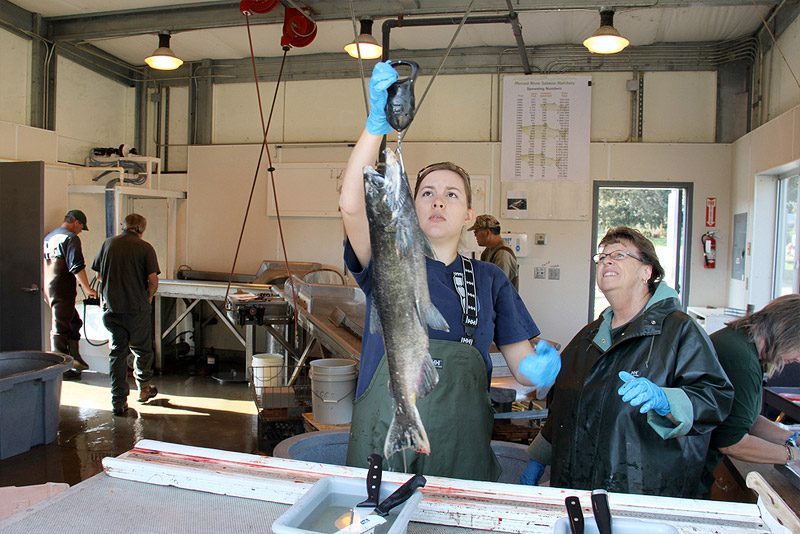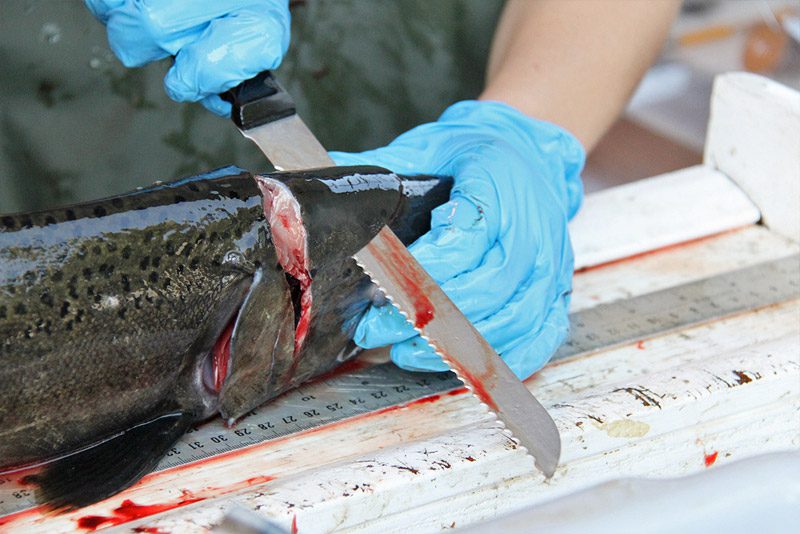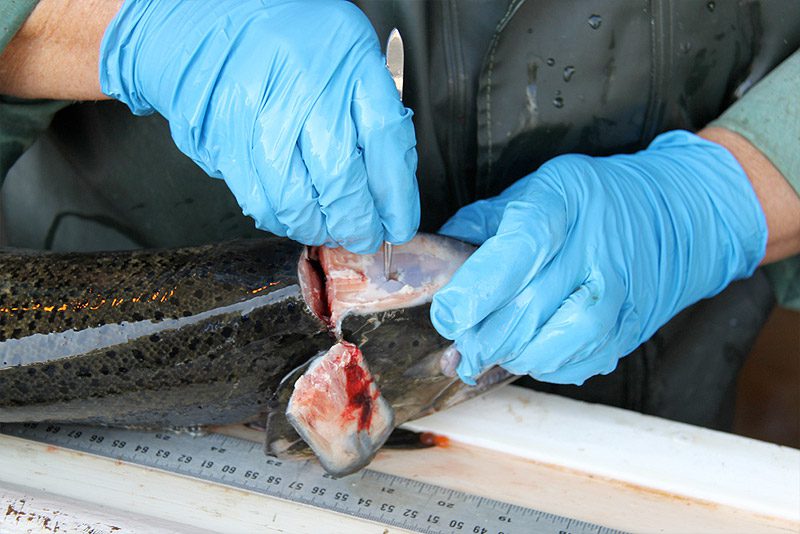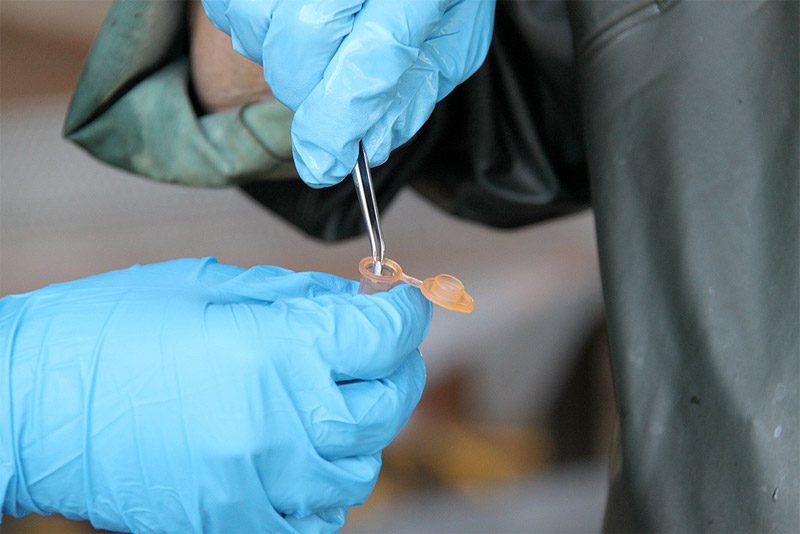Monday November 7, 2011
Otoliths are small mineral structures (ear bones) found in the head of all fishes other than sharks, rays and lampreys. Otoliths allow fish to hear and provide a sense of balance, but to a fisheries biologist, the otolith is one of the most important tools for understanding the life history of fish and fish populations. Otoliths can be used, like scales, to estimate the age of a fish or to trace where the fish has been. Thus, it is often necessary to extract the otoliths from salmon that are recovered from carcass surveys and hatcheries.
There are different methods for extracting otoliths from salmon. The “scalp” method, used here by DFG technicians, is one of the quickest and easiest methods for retrieving the otoliths. The top of the head is carefully sliced to expose the brain case without cutting through the otolith. Using forceps the brain can be pushed out of the way and the two largest otoliths, the Sagittae, can be extracted from near the bottom of the brain case. The otolith is often still inside the fluid filled sac (sacculus) that surrounds it, but the sac is easily removed. The otolith is then cleaned and stored or prepared for analysis.




